Gilles
Carpentier's Web Site:
Computer
Data Acquisition for Biochemistry Practice Works
Methods
and Examples
A
practical, quick, step by step illustrated procedure to "build" a
Clark electrode :
This page describes a
step by step procedure, allowing to make an operational Clark probe
in a few minutes. The device used comes from hansatech-instruments.
More details about
the physico-chemical principle are avaible on the "Experimental
Biosciences"
web site.
The "free
membrane" sensor :
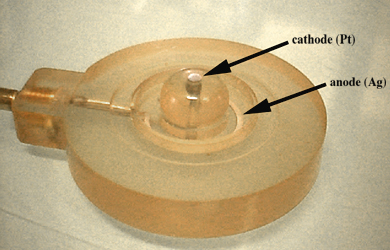
Montage of
the membrane :
 ------------------------
------------------------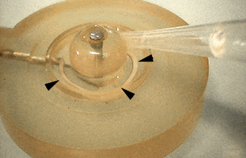 First, put a
drop of KCl onto the cathode, and put drops of KCl onto the annular
anode to make an uniform film of KCl solution (see arrows on the
picture above)
First, put a
drop of KCl onto the cathode, and put drops of KCl onto the annular
anode to make an uniform film of KCl solution (see arrows on the
picture above)
 -------
-------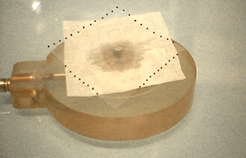 -------
-------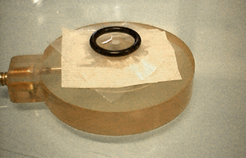 Put a piece
of cigaret paper (prefer thin paper, don't take the border containing
glue) on the top of the electode, cover by a piece of polypropylene,
and gently place the O-ring joint, avoiding the formation of bubbles
below the membranes.
Put a piece
of cigaret paper (prefer thin paper, don't take the border containing
glue) on the top of the electode, cover by a piece of polypropylene,
and gently place the O-ring joint, avoiding the formation of bubbles
below the membranes.
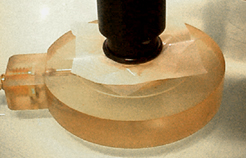 -------
-------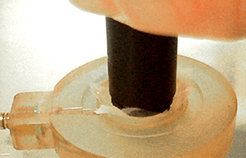 -------
------- Apply the
applicator onto the O-ring and "seale" the membranes. The membranes
have to be free of air bubbles.
Aspect of the
electrode ready to be assemble to the chamber:
Apply the
applicator onto the O-ring and "seale" the membranes. The membranes
have to be free of air bubbles.
Aspect of the
electrode ready to be assemble to the chamber:
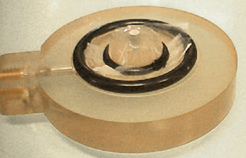 The three
following pictures show the assembly of the electrode and the
chamber:
The three
following pictures show the assembly of the electrode and the
chamber:
 -------
-------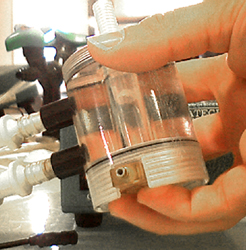 -------
-------
The electrode ready to use, on a magnetic stirrer, connected to the
control device and to a thermostated circulation of water
(arrows)
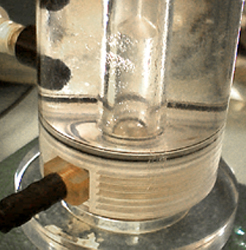 --------------
--------------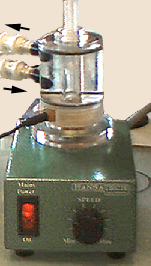
Return to the
Clak
electrode
main page
Special thanks to Alessandra Albano for her participation to
the English correction of this page.
Page
author: Gilles Carpentier. You can mail me if you are interested in
more details:
Address:
Gilles
Carpentier, Faculté des Sciences et Technologies,
Université Paris 12 Val-de-Marne, France.
Gilles
Carpentier's Web Site: "Computer
Data Acquisition for Biochemistry Practice Works: Methods and
Examples"



 ------------------------
------------------------
 -------
------- -------
-------
 -------
------- -------
-------

 -------
------- -------
-------
 --------------
--------------